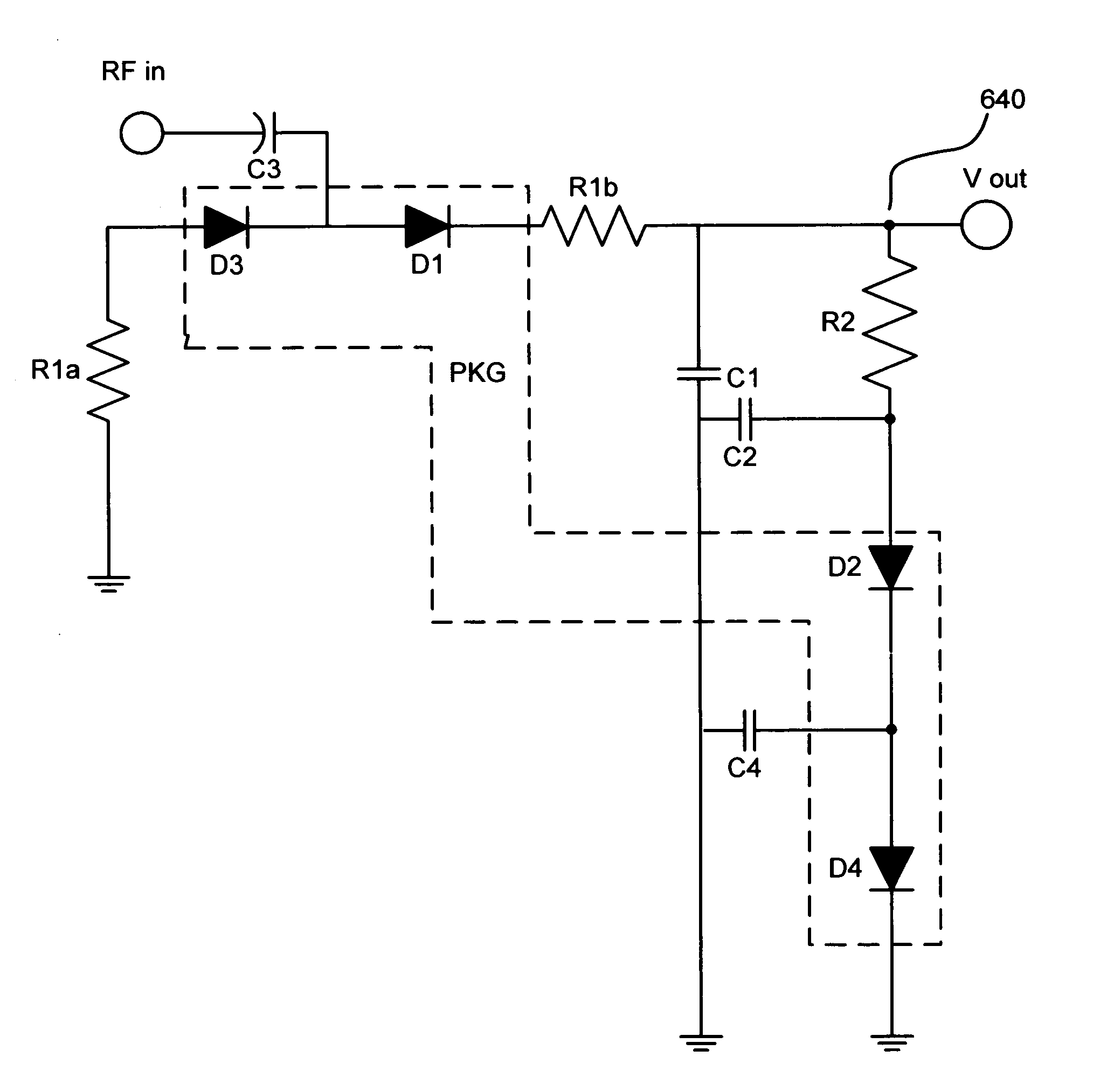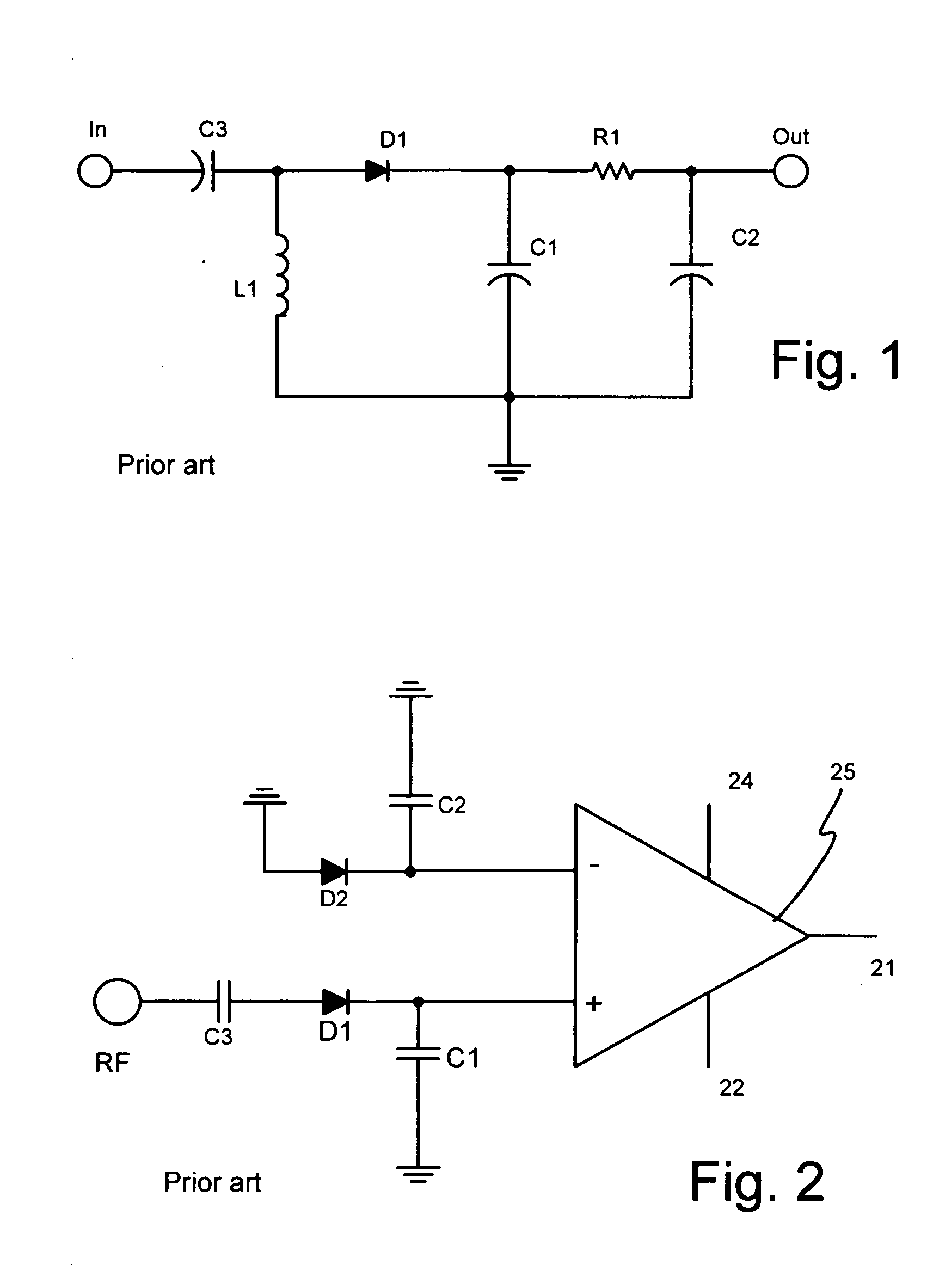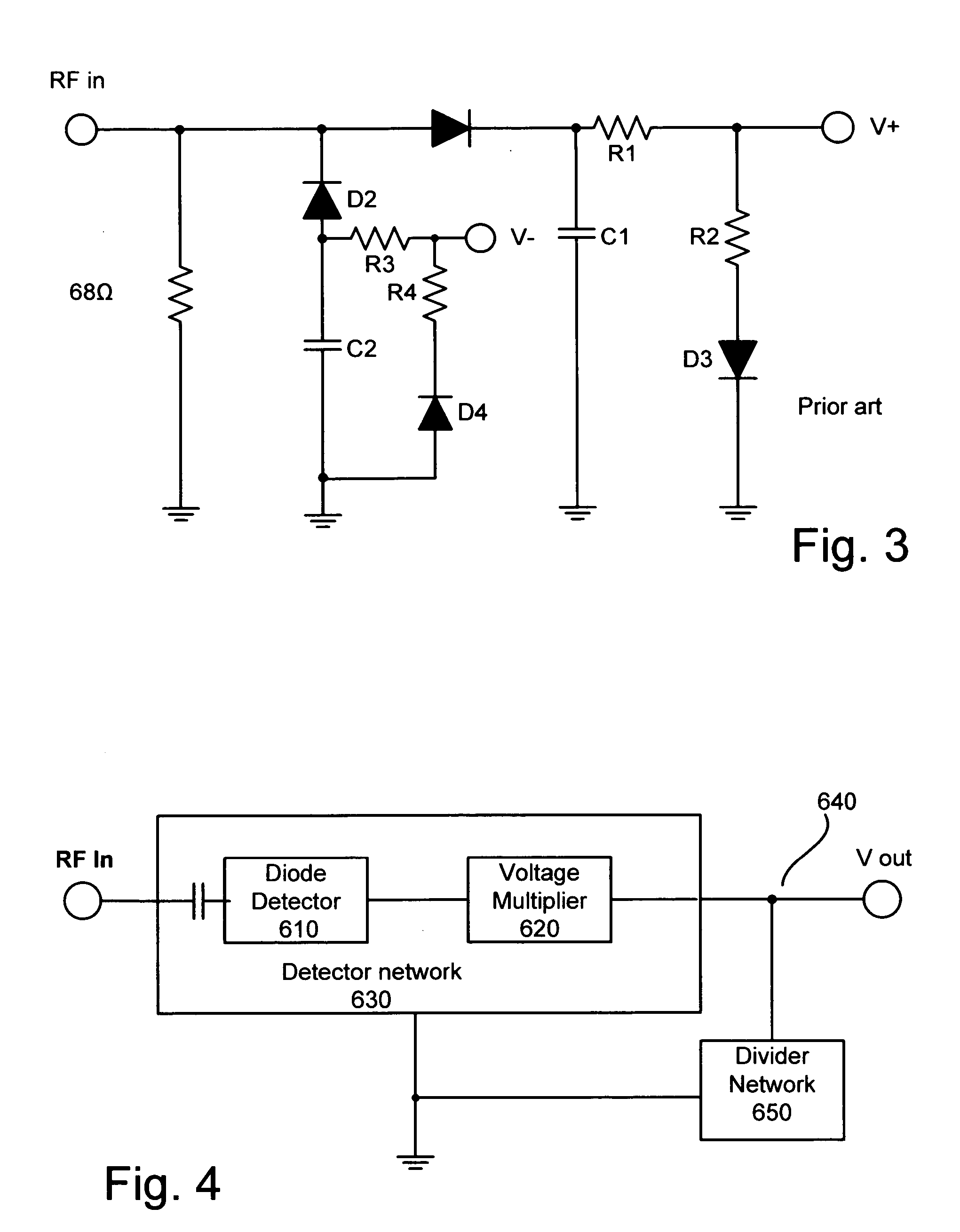Temperature compensated, high efficiency, controlled input impedance diode detector
a diode detector and input impedance technology, applied in the field of diode detector circuits, can solve the problems of complex circuit design, poor thermal stability of the circuit, and high cost, size, weight, and power requirements of the differential amplifier,
- Summary
- Abstract
- Description
- Claims
- Application Information
AI Technical Summary
Benefits of technology
Problems solved by technology
Method used
Image
Examples
Embodiment Construction
Referring now to FIG. 4 a most basic embodiment of the invention disclosed in Ser. No. 10 / 429,151 is shown. An RF (or any frequency) signal is inputted via input terminal RFin, into detector network 630. Detector network 630 comprises at least two basic components—a diode detector 610 and a voltage multiplier 620. Those skilled in the art will recognize that the diode used in the diode detector 610 may be utilized as a part of the voltage multiplier 620, or the detector may be separate from the voltage multiplier. In the preferred embodiment the voltage multiplier is a voltage doubler, comprising of the detector diode and a multiplier diode, however any number of diodes may be used, to provide voltage multiplication of any factor.
Divider network 650 is coupled to the output of the detector network at junction 640, and as it is coupled to the circuit ground (equivalently referred to as ground in these specifications), it forms a voltage divider together with the detector network. ...
PUM
 Login to View More
Login to View More Abstract
Description
Claims
Application Information
 Login to View More
Login to View More - R&D
- Intellectual Property
- Life Sciences
- Materials
- Tech Scout
- Unparalleled Data Quality
- Higher Quality Content
- 60% Fewer Hallucinations
Browse by: Latest US Patents, China's latest patents, Technical Efficacy Thesaurus, Application Domain, Technology Topic, Popular Technical Reports.
© 2025 PatSnap. All rights reserved.Legal|Privacy policy|Modern Slavery Act Transparency Statement|Sitemap|About US| Contact US: help@patsnap.com



